VIDYABEN SHAH & MANUBHAI SHAH
Delhi
Delhi and the Central Government – Manubhai the Parliamentarian, Administrator and Statesman
While Manubhai Shah was Finance Minister in Saurashtra, the 1st Deputy Prime Minister of India Sardar Vallabhbhai Patel, advised Prime Minister of India Pandit Jawaharlal Nehru to invite Manubhai to join the central Government of India in Delhi. Pandit Nehru had also seen Manubhai’s work in Saurashtra when he first visited Manubhai and Vidyaben in 1952 in Rajkot and was eager to invite Manubhai to join his Cabinet of Ministers. Nehru was keen on industrial development throughout India and felt that Manubhai would be the right person to handle this portfolio. Also Manubhai had been coming to Delhi for grants for Saurashtra and other Central Cabinet Ministers and Bureaucrats had got to know of his work and also showed their keenness to Panditji to induct him in the Cabinet in Delhi. While his colleagues were initially reluctant to lose Manubhai from the Saurashtra cabinet, they relented in the larger cause of the nation. Sacrifices in Gujarat were legendary. Member of Parliament Shri Jethalal Joshi gladly relinquished his Rajya Sabha seat for Manubhai in 1956. In the following year Manubhai won the Lok Sabha seat from Rajkot standing from the Indian National Congress party.
Manubhai Shah was a Member of Second and Third Lok Sabha from 1957 to 1967 representing Madhya Saurashtra Parliamentary Constituency of erstwhile Bombay State and Jamnagar Parliamentary Constituency of Gujarat. He was also a Member of Rajya Sabha during 1956-57 and from 1970 to 1976. During his parliamentary years, he was in the cabinets of Pandit Nehru, Lal Bahadur Shastri and Indira Gandhi,[1] having held portfolios such as industries,[2] commerce,[3] [4] industrial development and foreign trade.[5] An active social and political worker, Manubhai was also an institution builder and after arriving in Delhi he began to initiate and build a wide range of educational, social, infrastructure, research and industrial institutions throughout India. As in Saurashtra, Manubhai now plunged into development work for the country as a whole, He was a finisher and very rapidly completed any task he would take in hand.
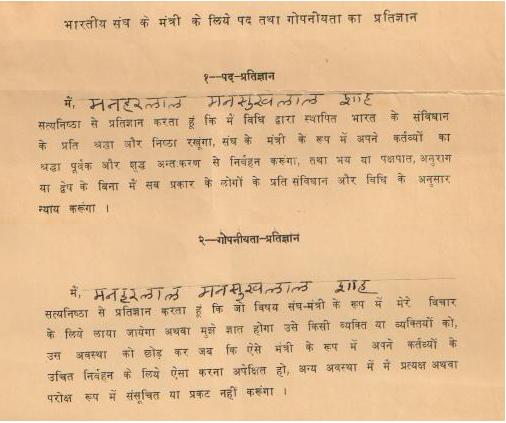
.
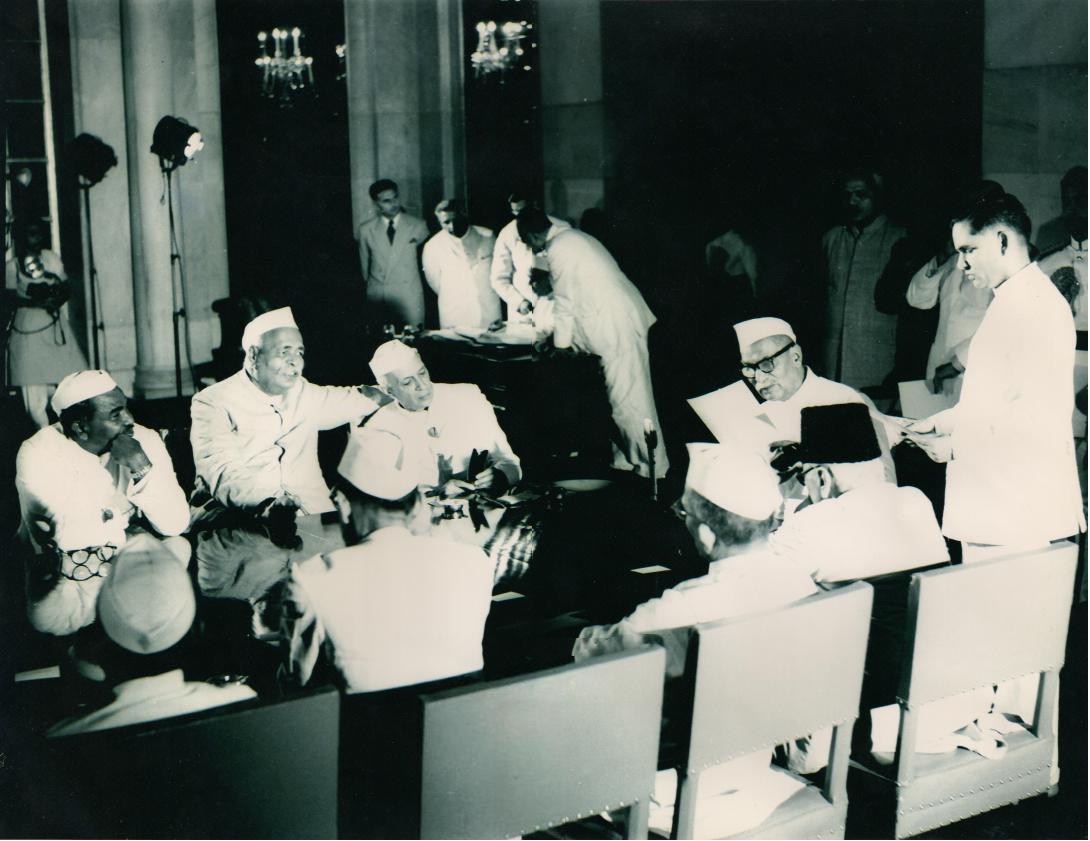
Vision for Modern India: the Mixed Economy Model
While Nehru had a vision for mega projects for India to modernise it, Manubhai not only had a vision but also the drive[6] to make India modern through mega as well as cottage and small industry projects which he had dreamt of doing while incarcerated during the Quit India Movement. Manubhai's activities as institution builder were ceaseless, including in the arts, higher education and the industrial sector. He was instrumental in the setting up of nearly 400 industrial estates in the country.[7] He was also responsible over five decades for promoting industrial and economic development and setting up of industries of all sizes in India, heavy, medium scale, small scale, cottage and village industries in private as well as public sectors.
Manubhai's vision was for a mixed economy in India and he endeavoured to create both public and private sector enterprises depending on what was suitable for a specific industry and geography. In his book Asian Drama, the 1974 Nobel Prize winner in Economics Gunnar Myrdal says that, "The practical and undoctrinaire approach followed by the Indian government was well expressed in 1962 by Manubhai Shah, then Union Minister for International Trade". Myrdal quotes Manubhai as having said that, "The policy has always been pragmatic and, therefore, flexible and there is a considerable amount of similar development in both the sectors of our national economy. For instance a substantial amount of machine building in the private sector also has been developed. Similarly, the fertiliser industry has grown both in the public and private sectors. The prime consideration has always been the requirement of rapid growth rather than any doctrinaire division of spheres. There is so much to be done that whoever can do it always gets encouragement. Wherever resources permitted, public sector units have been developed to the extent possible."[8] Manubhai's contribution to basic as well as heavy industries was also particularly noteworthy.[9] [10]
A number of key industries benefited from Manubhai's intervention. In 1956, Manubhai saw that the Munjal brothers were producing bicycle parts in Ludhiana, Punjab. Manubhai personally encouraged and supported them in producing the Hero Cycles which is now a leading bicycle manufacturer in the world. Manubhai had the idea that Swiss quality wrist watches should be produced in India. The public sector unit HMT was already producing machine tools since 1953. When Manubhai made his proposal in the meeting of the Union Cabinet, one Cabinet Minister strongly opposed the move, arguing that wrist watches were “a luxury item in a poor country like India”. At this, Prime Minister Nehru caught hold of the wrist of the colleague who raised the objection and exclaimed, “What is this you are wearing. How can you call it a luxury item?” And the proposal was approved by the cabinet and the PM said, “Go ahead, Manubhai!!” Thus with Manubhai's arduous work, HMT diversified into producing the first of Indian watches and Manubhai Inaugurated their first factory in Bangalore in 1960.
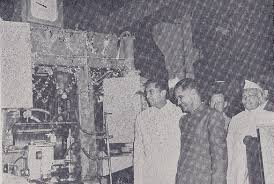
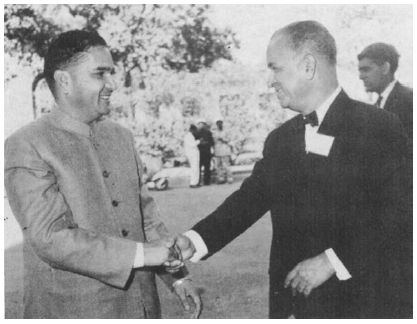
During his tenure as Industry Minister, Manubhai also encouraged the expansion of Kamani Engineering, such as manufacturing and exports of copper and brass rods and tubes and in 1960 inaugurated the Kamani Rod Mill. In 1960, he supported the expansion of and inaugurated the Papco paper mill, and onwards from the 1950s till he remained Minister of Industries and in charge of exports he laid the ground work for export promotion and actively helped to create more and more exports to earn the scarce foreign exchange needed by India. The eminent Indian industrialist Shri S L Kirloskar has stated this in his Autobiography published in 1982, and he further says that the development of Indian industry owes most to two cabinet ministers, one was Finance Minister and the other was Manubhai as Industry Minister, and while Finance dealt with issues of taxation etc, policies on exports and industry were helpfully dealt with by Manubhai. He goes on to say that the Ministers who followed "were not up to the mark, and proved less of a help and more of a hindrance to [Indian] industry."[11] Similarly, Manubhai dramatically improved the ease of starting industry and doing business in India for many emerging business houses, such as the Escorts group of companies including Escorts Agri Machinery, Atlas Cycles, Reliance Corporation, Bajaj vehicles.
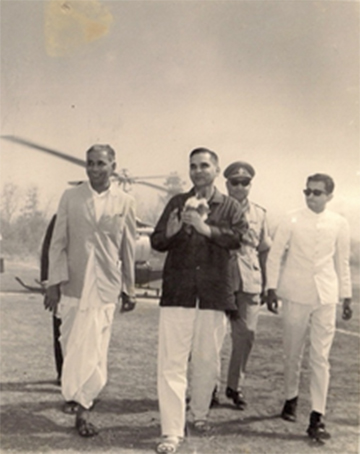
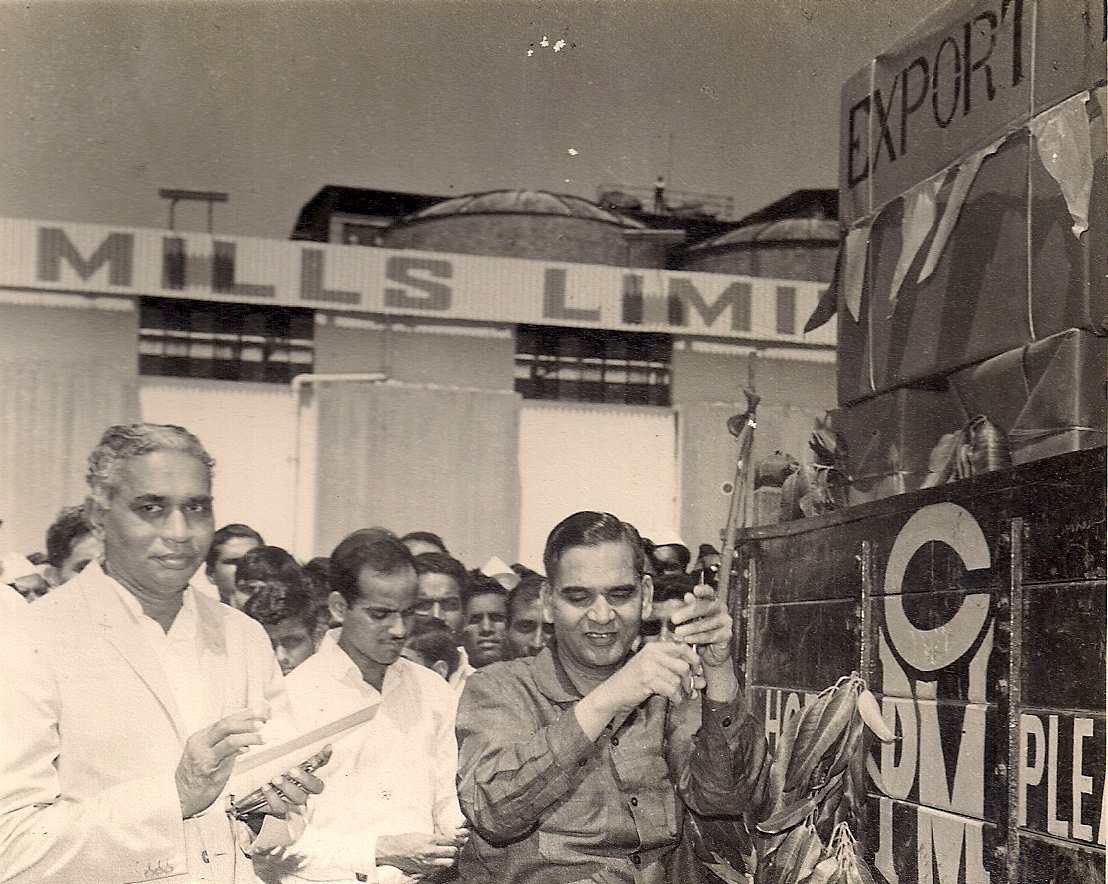
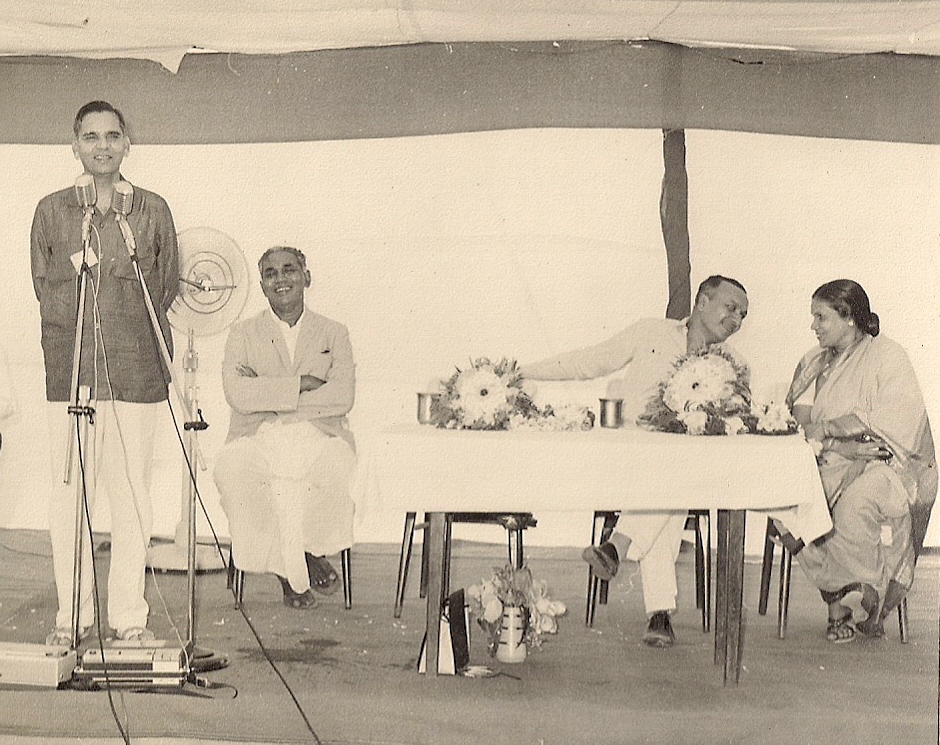
and Shrimati Kamalabai Parkhe, Founder of Parkhe Pariwar Trusts
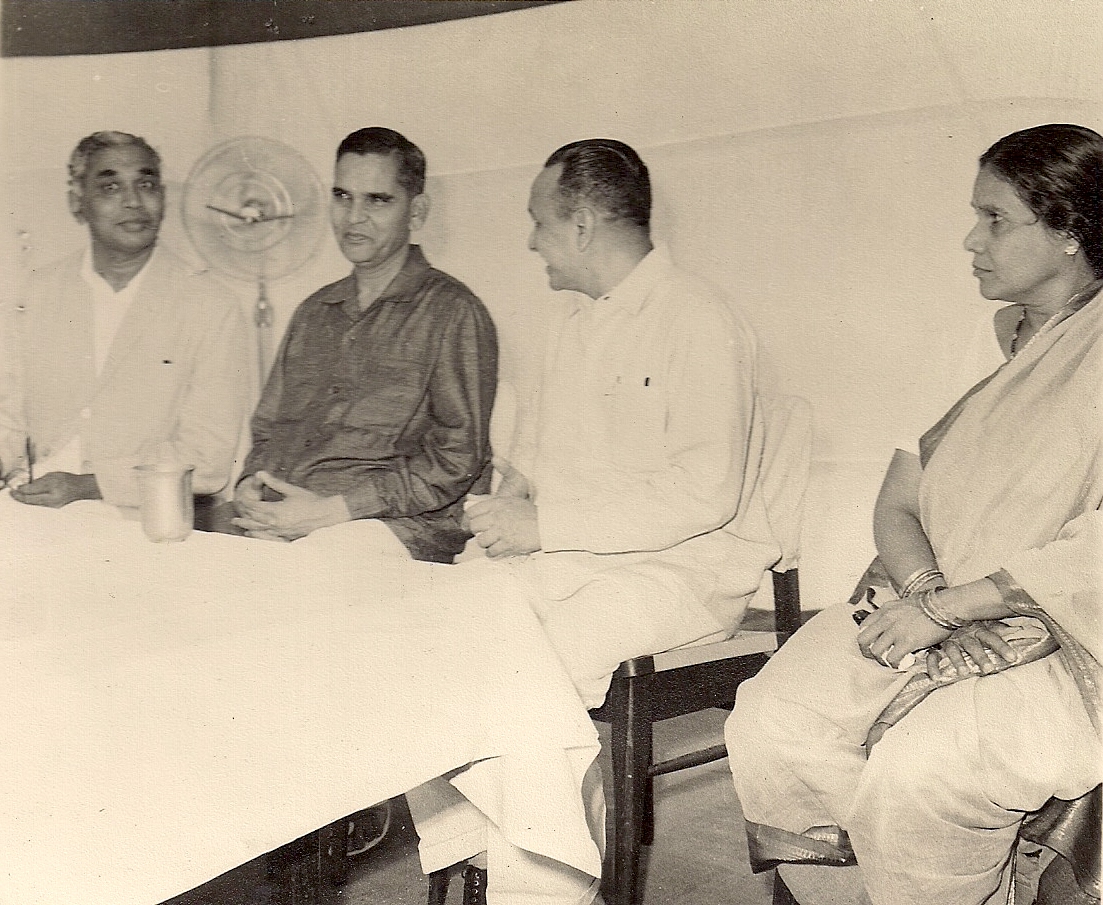
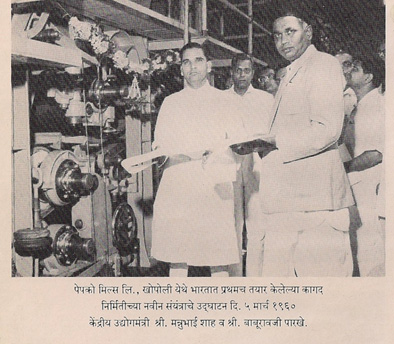
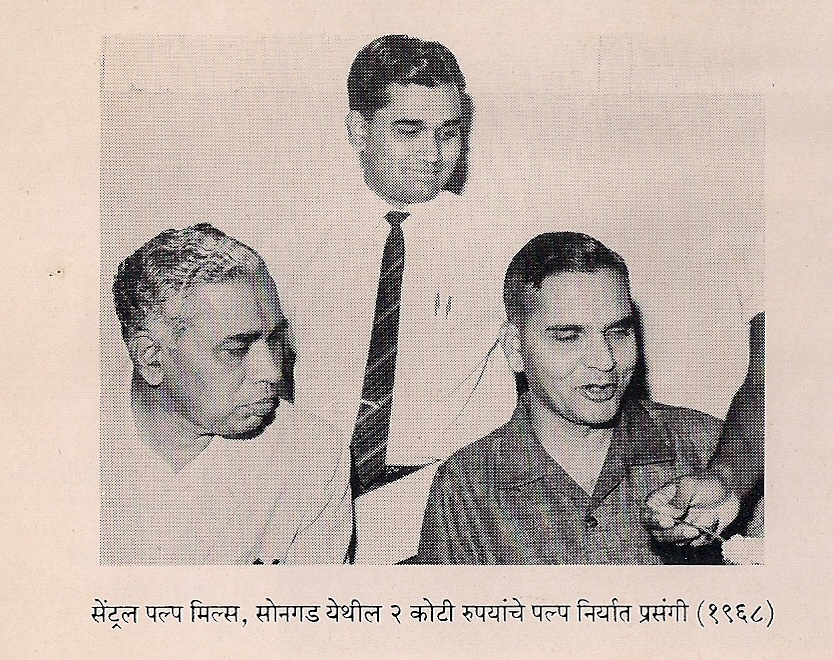
here he is with Shri Parkhe at Central Pulp Mills in Songarh congratulating the success at exporting pulp worth Rs 2 crore as early as 1968
Expanding Small, Medium and Large Industries
The number of small, medium and large industry, export and trade projects and programmes Manubhai was involved in developing as Industry and Commerce Minister is vast and the range of sectors is wide. His relations with leaders and members of the industry were warm and business giants had immense respect for Manubhai. In 1994, at an Institute of Chemical Technology function in Mumbai, when Manubhai was presented the "UDCT Diamond" award, UDCT fellow alumni Mukesh Ambani of Reliance Industries touched Manubhai's feet while greeting him. In 1986, when Dhirubhai Ambani had a stroke, Manubhai was requested to talk to Dhirubhai in ICU as Dhirubhai was not talking to anyone else. Dhirubhai responded when Manubhai spoke to him.
Builder of Indian Industry and Architect of Modern India
Manubhai was not only a visionary but also a man of action, quick to take decisions and even quicker to implement them and made his officers work very hard. Shri S L Kirloskar in his autobiography said of Manubhai that, "Often Mr Manubhai Shah, without waiting for us to go to him, would himself come to us and ask us to state our problems, after which he would immediately take up those problems and find solutions for them. Such co-operation cut through many of the official procedures and gave us solutions much earlier than can normally be had".[12] Another industrialist and MP from Rajya Sabha wrote of Manubhai that, "I have seen Manubhai operating as Minister of Industries, Government of India, when quick decisions were made. No lengthy paper work was involved. Manubhai used the Industrial Development and Regulation Act in the true sense that it was conceived, i. e. for development. After his departure from politics, 'development' part got lost somewhere and over-emphasis came on 'regulation'.[13] The eldest son of the industrialist Lala Shri Ram was Murli Dhar, whose daughter in law Prabha Sridhar recounts an incident when in the 1960s her husband Sridhar was developing a needle bearings industry project. Sridhar was looking for foreign collaboration and came back with a contract with a USA based company and sought Lalaji's opinion to decide whether to accept the contract or not. This was around late November time in the 1960s somewhat cold in Delhi. Lalaji immediately said, "Go and ask Manu, he will be the best person to advise." Sridhar called Manubhai who said, "Sure come along. why delay, I will wait for you at 5.30 tomorrow morning." And Sridhar went to see Manubhai at 5.30 a.m. on a late November morning, and they talked as Manubhai took his morning walk outside his residence in Delhi. He saw the papers there and then and gave an immediate decision. On his demise, the then President of India K R Narayanan called Manubhai Shah the architect of Modern India and said that Manubhai's contribution towards India's industrialisation will always be remembered. The very foundation of modern Indian industry was laid by him, the President of India said, and Manubhai was therefore also called the builder of Indian Industry, and as such was the first to liberalise and push the building of Industry in India years before the so-called liberal wave of 1992.
Manubhai had the courage to differ with his ministerial colleagues or even the Prime Minister if it became necessary in matters of policy and principles. On one occasion when he was Foreign Trade Minister he had a disagreement with the Commerce Minister on Industrial Licensing Policy, but there was also respect for one another and the matter was resolved with Prime Minister Nehru.[14] Another time when Manubhai opposed the move on devaluation of the rupee,[15] [16] there were differences with the Finance Minister and Manubhai resigned his portfolio as Industry Minister, later to be persuaded by Prime Minister Indira Gandhi to take back his resignation. Work disagreements apart, Manubhai and Vidyaben and their children had very warm relations with their political as well as other friends.
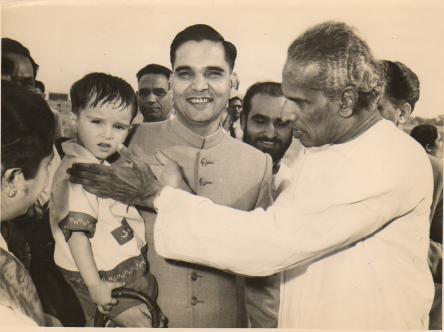
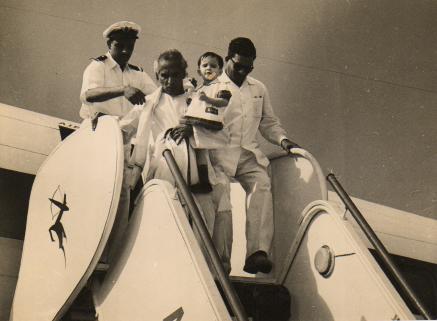
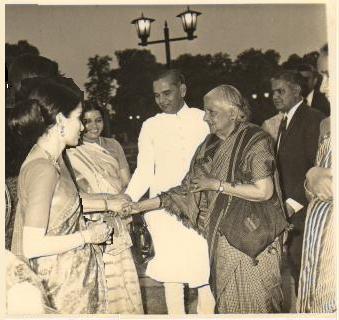
Industrial Development and Liberalisation
A pioneer of the first phase of liberalisation in independent India, Manubhai made the process simple and easy to start an industry even for entrepreneurs with limited resources at hand who would otherwise have found it difficult to meet many pecuniary and procedural challenges. He set up the necessary institutional framework, facilities and quick procedures to acquire licenses, permits, business ideas as well as resources. He would invite small entrepreneurs as well as established industrialists personally to set up innovative and essential businesses and industrial plants,[17] even if there was disapproval from institutions like the Reserve Bank of India. The leading industrialist S L Kirloskar said of Manubhai that, "The 1960s were a period of considerable expansion and diversification for us all along with growing export promotion. In all this we received help and encouragement from .. Mr Manubhai Shah."[18] The Maruti small car or the people's car project was his brainchild.[19] His most notable pioneering initiative was the setting up of the Small Industries Development Organisations and the Small Industries Service Institutes (SISI)[20] which he was determined to create in every State and District of the country (which are now also known as Micro, Small and Medium Enterprises & Development Institutes (MSME-DI)).[21]
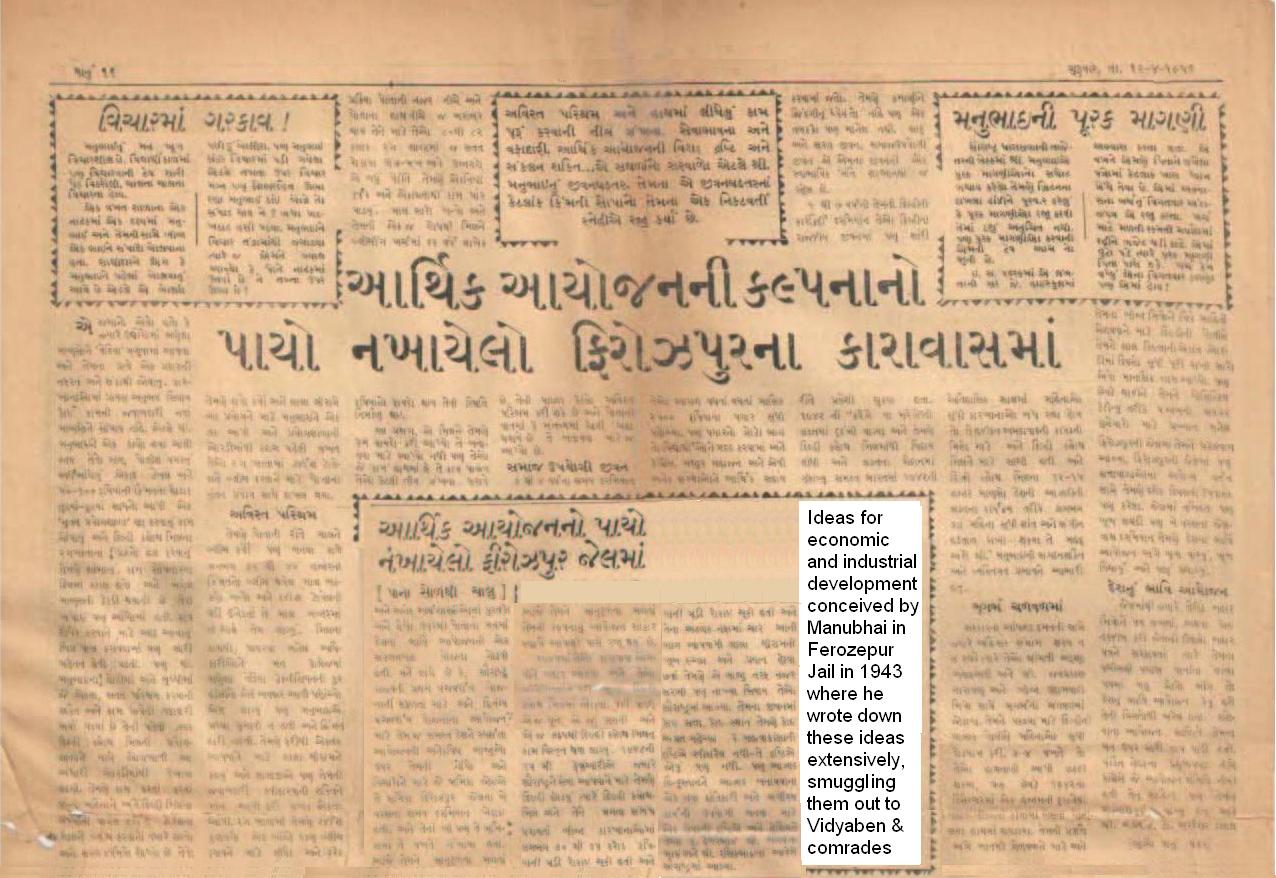
The first prototypes of these he had already set up as a Minister in the Saurashtra government, such as in Bhavnagar and Rajkot,[22] where facilities were provided for starting up small units, procuring loans, providing technical and product advice, skills training, exhibiting and selling of produce through creation of emporiums, bringing together interested potential small entrepreneurs and organising seminars, and even setting up of industrial townships, such as the Bhavnagar Small Industries Association, the Rajkot Bhaktinagar Udyognagar or Vapi Industrial Estate which became forerunners to the Industrial Estates which Manubhai helped set up across the country. As such these ideas of economic and industrial development were already conceived by Manubhai when he was in Ferozepur jail. He was also responsible for promoting extensive Indian foreign trade throughout the world and in later years of his life particularly in Commonwealth of Independent States countries (formerly part of USSR) for which he founded the India CIS Chamber of Commerce and Industry (ICCCI) in New Delhi in 1986.
Manubhai worked extensively on the idea of improving industrial productivity in India. He was instrumental in setting up the National Productivity Council in 1958.[23] In Asian Drama, Manubhai is quoted as saying: "Practically all of us can do in half the time what we are doing at the moment. This silver lining to the situation, if it could be so called, is that almost extraordinary increase in productivity could be achieved practically in no time at no cost, with almost everybody better off than before. We have only to turn our faces to the sun to see the light".[24]
Other Sectors
Apart from his extensive work in the Indian industry, commerce and foreign trade, Manubhai also made contributions in various other sectors. In 1968, Manubhai was appointed chairman of the Rehabilitation Commission of India. While he was a Member of Parliament in the Rajya Sabha from 1970 to 1976, he also worked actively for the Congress Party. Manubhai never sought any position and even when he was offered the post of Indian Ambassador to Britain or the post of Governor of Maharashtra, he declined saying that he wished to continue to do constructive work within India. In 1976 he became Chairman of the Banking Commission of India to put the banking sector on track after the nationalisation of the fourteen largest Banks in 1969.
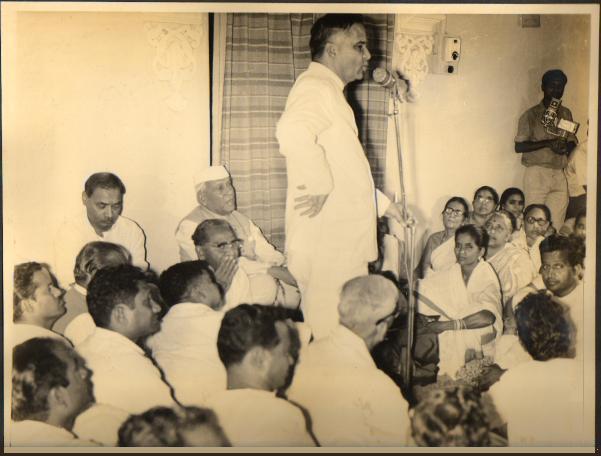
For the 1980 elections, the Congress Party persuaded Vidyaben to stand for the Lok Sabha seat from Surendranagar. However, in 1980 Manubhai stood for the 7th Lok Sabha election from Rajkot constituency, hence Vidyaben declined the offer to stand from Surendranagar.
Institution BuilderAmong the institutions that Manubhai was instrumental in creating are Jawaharlal Nehru University in 1960s having also suggested its name[25], Cottage Industries Emporium in New Delhi, the State Trading Corporation (STC) in 1956,[26] the Metals and Minerals Trading Corporation (MMTC) in 1963,[27] Indian Institute of Foreign Trade in 1963,[28] Gujarat Industrial Development Corporation,[29] Gujarat Industrial Investment Corporation,[30] Gujarat Industrial Finance Corporation, Gujarat State Finance Corporation,[31] M. P. Shah Medical College Jamnagar,[32] Akhil Bharat Gujarati Samaj, Triveni Kala Sangam, Sardar Patel Vidyalaya School.[33] He also served as Chairman of National Research Development Corporation, Banking Commission, Central Board of Rehabilitation, Gujarat Industrial Development Corporation and Gujarat Industrial Investment Corporation. He was instrumental in initiating, among others, many of the industrial units that are situated along the lengths and breadths of the Faridabad Industrial Estate,[34] Okhla Industrial Estate, Vapi Industrial Estate, Ankleshwar Industrial Estate,[35] Bhavnagar District Small Industries, and Rajkot Udyog Nagar. Manubhai also pushed and helped to expand, modernise and professionalise the Amul Dairy in Anand, Gujarat on an international scale and design.[36] There were many different ways in which he urged and persuaded Mr Kurien to expand Amul. Here is the fascinating history narrated by Ruth Heredia in her book about how dynamic and ingenious Manubhai Shah was in his functioning as Industry Minister; some of the anecdotes are highly amusing and interesting. As Ruth says in her book, "Manubhai had met Kurien years before 1956, and he was on excellent terms with him", and hence was able to work closely with Kurien to expand, modernise and professionalise Amul. There were many hurdles to be crossed but as Ruth states, "true to his promise, the Minister intervened to get [Kurien] the license" to manufacture baby food and cheese in addition to condensed milk and other dairy products already in the pipeline[37]. Manubhai went about any of his work as a man with a mission and it is astonishing how he had the time, energy and drive simultaneously to make outstanding contributions in a vast array of fields.
Orator, Motivator, Initiator and FinisherQuick witted, having an acutely sharp memory with facts and figures at his finger tips, Manubhai was a brilliant orator, planner and executor of outstanding ideas and concepts on economic development. He was a voracious reader with an intellect of unique blend of realism and idealism, of practical wisdom and innovative ideas. He was already a powerful speaker during the freedom struggle, and as a young Minister in Saurashtra he had impressed experts in international forum like the Economic Commission for Asia and the Far East (ECAFE). Journalists and the public were attentive to his every word, his speeches in the Indian Parliament and other public forums having become legendary. When Smt Indira Gandhi was Minister for Information and Broadcasting in the Cabinet of Lal Bahadur Shastri in 1965, she would often request Manubhai to answer Parliamentary questions relating to her ministry as she felt that he commanded great attention during Question Hours in Parliament. In one Parliamentary debate in Lok Sabha, Madhu Limaye MP of the Socialist Party alleged that Manubhai had accumulated considerable wealth as Minister. The following day Manubhai responded by giving full details of his personal accounts and any family assets and challenged Mr Limaye or anyone else to come forward and investigate his finances. Some years later, Mr Limaye met Manubhai and expressed regret for having made a baseless statement in Parliament. During his professional as well as political career, Manubhai also wrote extensively either directly to Indian entrepreneurs giving detailed plans on how they could set up industries or published numerous newspapers articles on issues concerning the economy and the industry.[38]
Starting the day early, he would invite journalists and people from all walks of life for morning walks and breakfast from 5 a.m. onwards. A patient listener, he would show equal respect to anyone who came to him. Once when he was still in active politics, despite his hectic schedule, he spent the whole day in hospital with the son of one of his cleaning staff. He was modest and generous and his acts of charity were many, though he would never talk about them. On his demise, the then Rajya Sabha Member (and later Prime Minister) Shri Manmohan SIngh said that, "Manubhai was an outstanding public servant who served the country in diverse capacities with great distinction. He was an active partner along with Pandit Nehru and other Prime Ministers in building a self-reliant and progressive India. His life and work will continue to inspire generations of our people." The then President of India K R Narayanan called Manubhai Shah the "architect of Modern India" and said that Manubhai's contribution towards India's industrialisation will always be remembered. Urban Development and Poverty Alleviation Minister Shri Jagmohan said that, "Manubhai was a towering personality who made immense contribution in various aspects of our political, social and cultural life. His noble life will be a great inspiration for generations to come." Governor of Maharashtra
Manubhai’s contribution to the world of trade was significant and which also set a trend for further development of exports and widening of foreign trade in India. Immediately upon taking over office as Union Minister in New Delhi in 1956, he began setting up trade bodies to increase exports and make easy the bringing into the country imports of essential goods. During the tenure in office of Premier Khrushchev from 1956 to 1964, Manubhai worked closely with Khrushchev to effect a substantial increase in trade between India and the Soviet Union. Sankar Ghose writes in his book that to make trade relations easier between the two countries, "Khruschev told Manubhai Shah, Minister of Industry, 'We have little to spare. But we will help you to rob the robber [referring to the USA], for every rouble we give you, will bring you five dollars.'"[39] Manubhai's work with the Indian Institute of Foreign Trade throughout the decades until his death is legendary.[40] He was President of the Indian Council of Foreign Trade in the 1970s.[41] After he had left active politics, he continued to labour to expand trade with other countries. His most notable contribution to international trade is his setting up in 1986 of the INDIA CIS Chamber of Commerce and Industry (ICCCI) of which he remained Founder President[42] until the year 2000. With his vast experience in the field of trade and his networking skills with leaders worldwide, the ICCCI flourished and business men and women from India and the Confederation of Independent States were brought together for augmenting trade between India and the CIS States.
Manubhai died in December 2000 at the age of 86. A long obituary for Manubhai Shah was read out in the Parliament of India on 19 February 2001 calling him “a renowned parliamentarian and an able administrator, who served with distinction in the Union Council of Ministers. During his tenure, he held various portfolios as Union Cabinet Minister including Commerce and Industry and International Trade.” (For the obituary, click here or here and see page 24).
The text of the obituary is reproduced below as the online links to the Parliamentary Archives change from time to time: “Shri Manubhai Shah was a Member of Second and Third Lok Sabha from 1957 to 1967 representing Madhya Saurashtra Parliamentary constituency of erstwhile Bombay State and Jamnagar Parliamentary constituency of Gujarat. He was also a Member of Rajya Sabha during 1956-57 and from 1970 to 1976. Shri Shah was a Member of Saurashtra Legislative Assembly from 1948 to 1956 and served as Minister of Industries, Finance and Planning in the State Government. A veteran freedom fighter, Shri Shah took active part in the Quit India Movement and suffered imprisonment for three years. A renowned parliamentarian and an able administrator, Shri Shah served with distinction in the Union Council of Ministers from 1956 to 1967 in different capacities, as Cabinet Minister of Commerce and Industry and International Trade. He also served as Chairman of Central Board of Rehabilitation, Gujarat Industrial Development Corporation and Gujarat Industrial Investment Corporation. An active social and political worker, Shri Shah took keen interest in promoting industrial and economic development and setting up of heavy, small scale and village industries throughout India. He formulated the first comprehensive Industrial Development Policy for independent India the blueprint of which continues to be implemented since then."
.
Vidayben's offical duties and other national level and local work in DelhiVidyaben was an equal partner in whatever work Manubhai was involved in. She was in attendance to look after visitors and dignitaries that came to Delhi on official visits from abroad or from within India. Her own key focus was also on work with children, women, elderly and the minority communities such as Vaghri Samaj. She was also actively involved in work related to Indian tradition and culture, including the fine arts, kitchen gardens, theatre, and healthy traditional cooking. Vidyaben's activities are numerous. These are described in the next two webpages 'Welfare' and 'Culture, Civics, Institutions'.
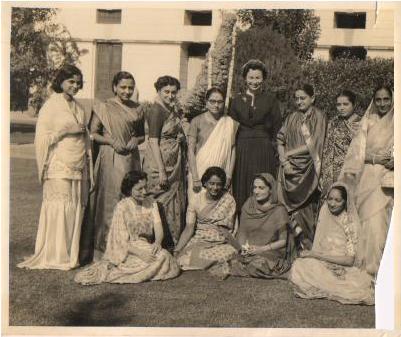
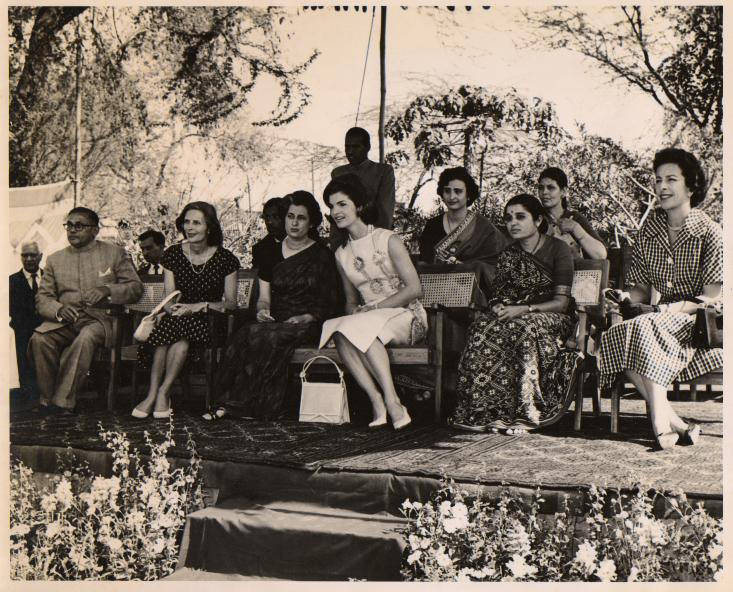
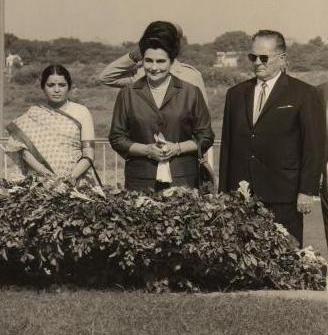
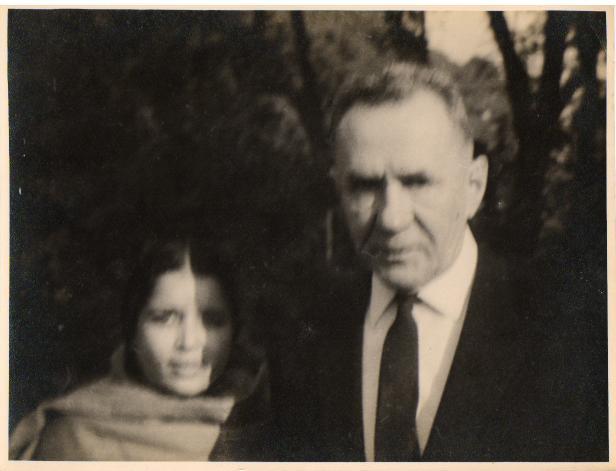
Concern for justice
Manubhai Shah was deeply concerned about communal politics that divided the country in 1947. He wished for a united India that treated all its people equally and wrote extensively on the issues and wrote a book on the condition of Muslims in India. During the freedom movement because of his name and his activities and his appearances, he was known to the British as a Muslim and was hunted as one. The British became aware of who he was only on his capture and subsequent imprisonment.
Concern for FamilyVidyaben and Manubhai kept hectic schedules working for the country. But they never neglected the family which often came together for festivals and functions and, of course, for solving problems! In independent India, most of the family had opted for higher education and some had become professionals.
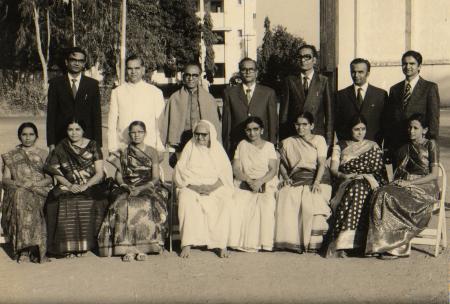
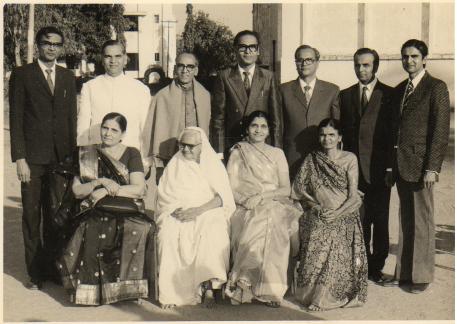
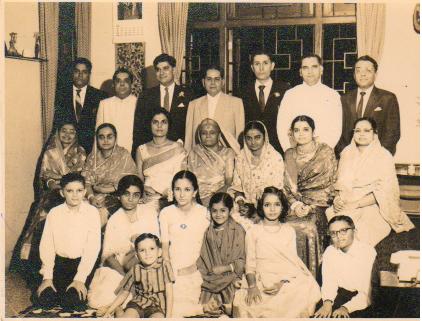
References
- ^ Ananth V Krishna (2011) India Since Independence: Making Sense of Indian Politics, Pearson Education in South Asia, New Delhi, p 73.
- ^ Virendra Kumar (1978) Committees and Commissions in India 1947-73, Concept Publications, Delhi, p 408.
- ^ R D Pradhan and Madhav Godbole Debacle to Revival: Y.B. Chavan as Defense Minister, 1962-65, p 291.
- ^ Manisha (2004) Profiles of Indian Prime Ministers, Mittal Publication, New Delhi, p 25.
- ^ Manisha (2004) Profiles of Indian Prime Ministers, Mittal Publication, New Delhi, p 37.
- ^ Stanley Kochanek (1974) Business and Politics in India, University of California Press, Berkeley, p 300.
- ^ Rediff News Report, December 2000.
- ^ Manubhai Shah is quoted from Centralised Industries, A.I.C.C. Economic Review, August 22, 1962, p 10. The complete citation is from Gunnar Myrdal (1968) Asian Drama – An Inquiry into the Poverty of Nations, Vol II, The Twentieth Century Fund Inc, 1968, p 825.
- ^ Weekly Notes The Economic Weekly, 26 September 1959, p 1320; or click here for the pertinent Excerpts.
- ^ In his book Asian Dram, the Nobel Prize Winner Gunnar Myrdal writes that when Shri Manubhai Shah was Union Minster for Commerce, Industry and International Trade, Manubhai said: "Long run growth of income will proceed fastest if instead of trying to do everything at the same time, we concentrate initially on basic and heavy industry." Manubhai Shah is quoted from Centralised Industries, A.I.C.C. Economic Review, 22 August 1962, p 10. The complete citation is from Gunnar Myrdal (1968) Asian Drama – An Inquiry into the Poverty of Nations, Vol II, The Twentieth Century Fund Inc, 1968, p p 821n.
- ^ S L Kirloskar (1982), Cactus and Roses - An Autobiography. Published by Macmillan India Limited in 2003. See pages ii, 115, 181-182, 184-185, 194, 202-204. Click here for free download of the highly interesting full Autobiography of Shri Kirloskar.
- ^ Ibid.
- ^ Quoting Shri Viren Shah, Industrialist, MP and Governor of West Bengal.
- ^ Manisha (2004) Profiles of Indian Prime Ministers, Mittal Publication, New Delhi, p37.
- ^ R. J. Venkateswaran (1986) Decision-making in Indian economy: Role of Central Government, Himalaya Publishing House, p 128.
- ^ B G Verghese (2010) Enter Mrs G: Madam, Prime Minister, Sir, in First Draft: Witness to the Making of Modern India, Tranquebar Press, New Delhi.
- ^ Ramco Cement Golden Jubilee, "In 1956, the Industries Minister Shri Manubhai Shah invited Shri P.A.C. Ramasamy Raja, founder of Ramco Group of Companies, to establish a cement plant that was being allotted to the State of Tamil Nadu."
- ^ Margaret Herdeck and Gita Piramal (1985) India's Industrialists, Volume 1, A Three Continents Book, Washington D.C., p 384.
- ^ 35 years ago: The small car project, India Today, 2 April 2012.
- ^ SISI across India, Now by the click of a button, on the Site click on the right arrow one by one to see all the SISI across India.
- ^ MSME Gujarat, By the click of a button.
- ^ Rajkot MSME-DI and SISI, SISI now Rajkot MSME-DI.
- ^ National Productivity Council Founded in 1958 by Shri Manubhai Shah, Minister of Commerce and Industry.
- ^ Manubhai Shah (1960) Importance of Industrial productivity , in "Productivity", Journal of National Productivity Council, Vol 1, No 4, Delhi, April–May, 1960, p 192, cited in Gunnar Myrdal, Asian Drama, 1968, p 1140n.
- ^ JNU website
- ^ STC website
- ^ MMTC website
- ^ IIFT website , IIFT was set up in 1963 by the Government of India under the direction and guidance of the then Union Minister for Foreign Trade Shri Manubhai Shah.
- ^ GIDC website
- ^ GIIC website
- ^ GSFC website
- ^ M P Shah Medical College website
- ^ Sardar Patel Vidyalaya website
- ^ Industrial Associations of Faridabad website
- ^ Ankleshwar Industries Association website
- ^ Amul Dairy website
- ^ Amul India eStory For the full history click here and read the eBook: Ruth Heredia, The Amul India Story - Rural Renaissance Through Milk Coops, Tata McGraw-Hill, New Delhi, 2001. (Description of Manubhai's crucial role in the expansion of Amul can be found throughout the book, but specifically see Chapters "The Tree Grows: Taking on the Giants", "Gloves Off", "Fruitful Collaboration", and "Anand Pattern", pp 148-190.)
- ^ An example of Manubhai's many newspaper articles: Manubhai Shah (1966) Exports and Economic Growth, The Economic Times, New Delhi, 20 January 1966, p 4.
- ^ Sankar Ghose (1993) Jawaharlal Nehru: A Biography, Allied Publishers, New Delhi, p 273.
- ^ Indian Institute of Foreign Trade website
- ^ see The Times of India Group website for 1975 photo of Manubhai Shah as President of Indian Council of Foreign Trade
- ^ India CIS Chamber of Commerce and Industry website
CLICK BELOW TO VIEW OTHER PAGES ON VIDYABEN SHAH & MANUBHAI SHAH
Culture, Civics, Institutions What people said